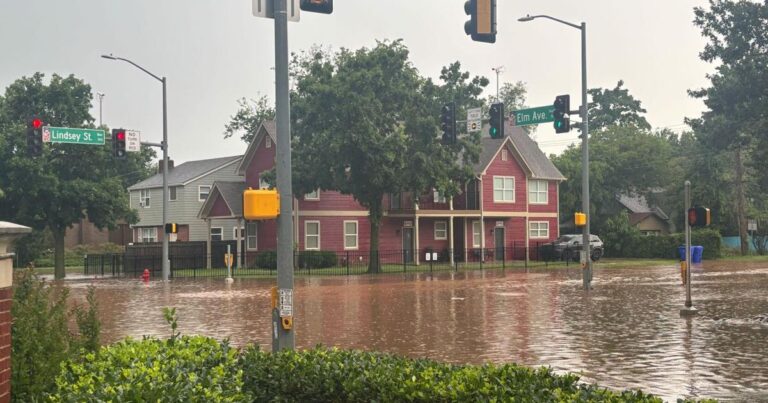Norman City Council heard a presentation at its Tuesday study session regarding the Federal Emergency Management Agency’s community rating system following recent flash floods and road closures.
Public Works Director Scott Sturtz said FEMA sets floodplain management standards for communities participating in the National Flood Insurance Program, which provides access to federally funded flood insurance for property owners.
Floodplains are nearly flat areas along the course of streams or rivers that are naturally subject to flooding, Sturtz said. Floodplain management is a community program to reduce the risk of flooding and includes requirements for building codes and floodplain ordinances.
Sturtz said the city is part of FEMA’s Community Rating System, a voluntary incentive program encouraging floodplain management within individual communities. Under the rating system, communities are rewarded for going above minimum standards set by the National Flood Insurance Program by receiving discounted flood insurance premiums.
There are 10 community rating system classes, which are determined based on the number of points a community achieves in four categories: public information activities, mapping and regulations, flood damage reduction activities, and warning and response.
Norman is a Class 6 community, meaning there’s a 20% premium reduction on properties within Norman’s Special Flood Hazard Area. Sturtz reported only about 7%, or 64 out of 863 buildings, under the Special Flood Hazard Area have flood insurance.
“Norman is way ahead of the curve,” Sturtz said. “There’s only a few communities that participate in this rating system that we do, and we’re one of the top communities in Oklahoma in that.”
Mayor Stephen Tyler Holman said reaching higher classes would help Normanites and significantly aid the city’s execution of its floodplain management.
“A Class 1 community with a 45% discount (on insurance) would be pretty significant,” Holman said. “Especially since Oklahoma’s becoming one of the hardest states to get insured (in).”
Holman told OU Daily after the meeting that the presentation showed where the city stands with flooding.
“We all know flooding is a real issue in Norman,” Holman said. “Thankfully, we haven’t had major flooding events that have resulted in loss of life in Norman, but we have had property damage – very significant property damage.”
Sturtz said he wishes Normanites would inform Public Works of flood damage so the department knows how it can better help in flooding situations.
“I wish that when citizens do have damage in their homes or in their business,” Sturtz said., “I wish they would call us, because if we have that information, then that helps us also know where we need to put the efforts in.”
Sturtz told OU Daily after the meeting that the presentation helps spread information to residents.
“It’s another way for us to get the information to our (residents),” Sturtz said. “As (council is) discussing with people in their wards and (with) their constituents, they’re able to share this information.”
Sturtz said one of his future goals for floodplain management in Norman is to achieve a higher class rating.
“We always want to improve it,” Sturtz said. “We’d like to continue to try to improve into higher classes.”
Flood warning system
Amid FEMA cuts made under the Trump administration, the city of Norman was forced to put a hold on building an automatic flood warning system. Sturtz said city officials are continuing to pursue funding for the project despite the funding slashes.
“It can help keep Norman (residents) safer and help us protect our roadways and our flooding areas,” Sturtz said. “We will continue to apply to grants for that.”
Holman said city officials are considering local funding while exploring state and federal funding options.
“A flood management system could be a project that we try to get locally funded, maybe over a span of time,” Holman said. “If we have to, try to save up and do that, but then just continuing to explore any state or federal options that come up in the future for how we can improve our systems.”
This story was edited by Ana Barboza and Natalie Armour.


